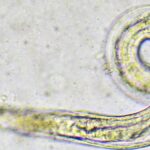Can Spayed Dogs Get Pyometra
Can Spayed Dogs Get Pyometra? Everything You Need to Know
Pyometra is a dangerous and life-threatening condition that can affect female dogs. This infection of the uterus can be extremely painful and potentially fatal if left untreated. But what about spayed dogs? Can they still get pyometra?
The answer may surprise you.
Contrary to popular belief, spayed dogs can still develop pyometra. While the risk is significantly lower than in intact females, it is not zero.
So, how does this happen?
When a dog is spayed, the ovaries and uterus are removed. However, in some cases, small remnants of uterine tissue can be left behind. These remnants, known as a stump or horn, can become infected and lead to pyometra.
Additionally, some spay procedures may not completely remove all of the uterine tissue. This is more likely to occur in larger or overweight dogs where the uterus is harder to access during surgery.
It’s important to note that while pyometra can occur in spayed dogs, it is much less common than in intact females. However, if you notice any symptoms of pyometra in your spayed dog, it’s essential to seek veterinary care immediately.
Symptoms of Pyometra in Spayed Dogs
The symptoms of pyometra in spayed dogs are similar to those seen in intact females. They include:
– Loss of appetite
– Vomiting
– Lethargy
– Increased thirst
– Abdominal swelling
– Discharge from the vulva
– Fever
If you notice any of these symptoms in your spayed dog, don’t wait! Seek veterinary care right away.
Treatment for Pyometra in Spayed Dogs
The treatment for pyometra in spayed dogs typically involves surgical removal of the infected tissue. In some cases, antibiotics may also be necessary.
It’s important to note that pyometra is a medical emergency and can be fatal if left untreated. The earlier you seek veterinary care, the better the chances of a successful outcome.
Preventing Pyometra in Spayed Dogs
While spaying your dog significantly reduces the risk of pyometra, it is not foolproof. To help prevent this condition in your spayed dog, consider these tips:
– Keep your dog at a healthy weight
– Ensure proper surgical technique during spay surgery
– Monitor your dog for any signs of illness or infection
– Schedule regular wellness exams with your veterinarian
Conclusion
While spaying your dog greatly reduces the risk of pyometra, it is still possible for spayed dogs to develop this dangerous condition. By being vigilant and monitoring your dog’s health, you can help catch pyometra early and seek appropriate treatment.
Remember, if you notice any symptoms of pyometra in your spayed dog, don’t wait! Seek veterinary care immediately. With prompt treatment, your furry friend can recover from this potentially life-threatening condition.



